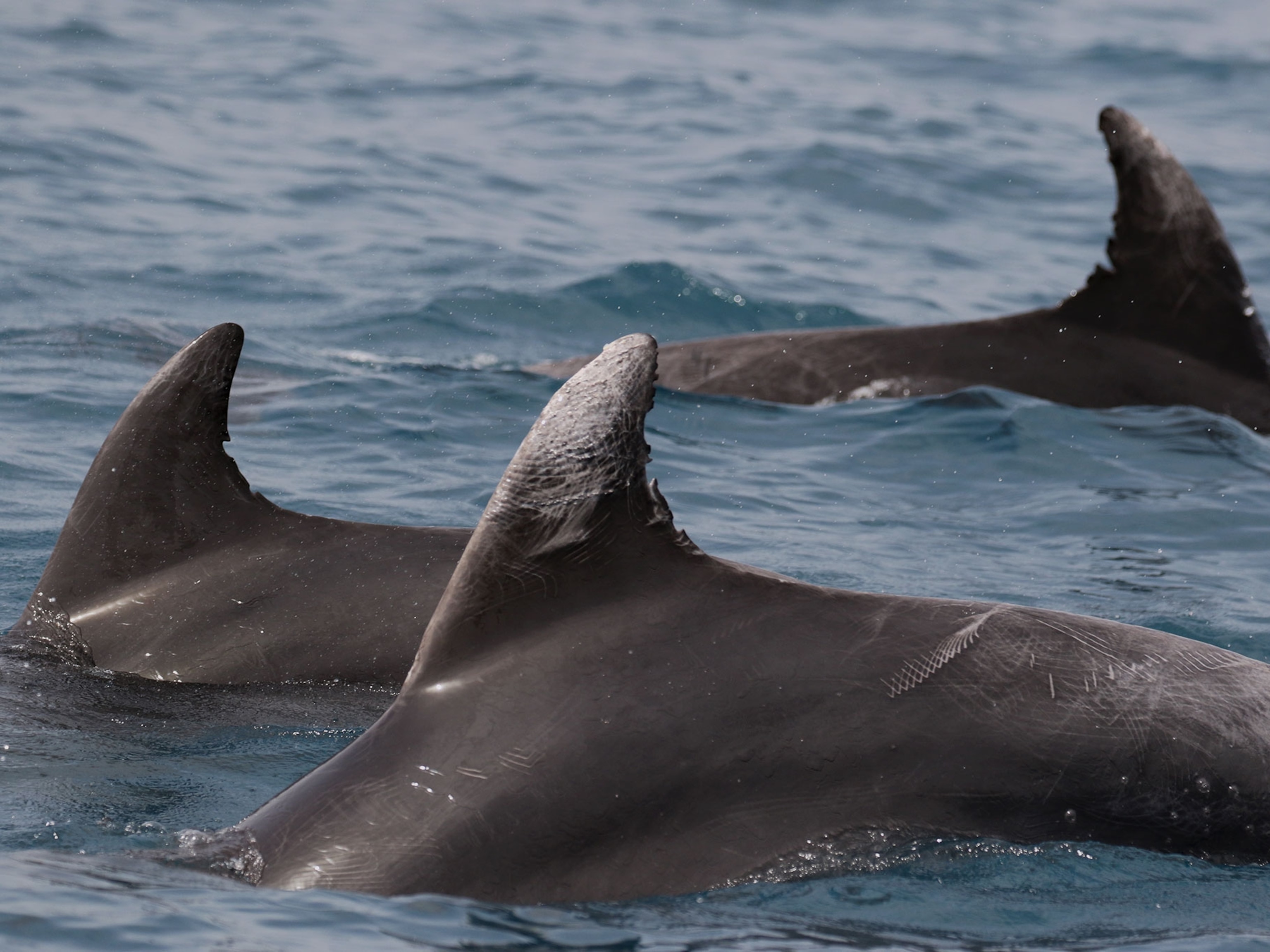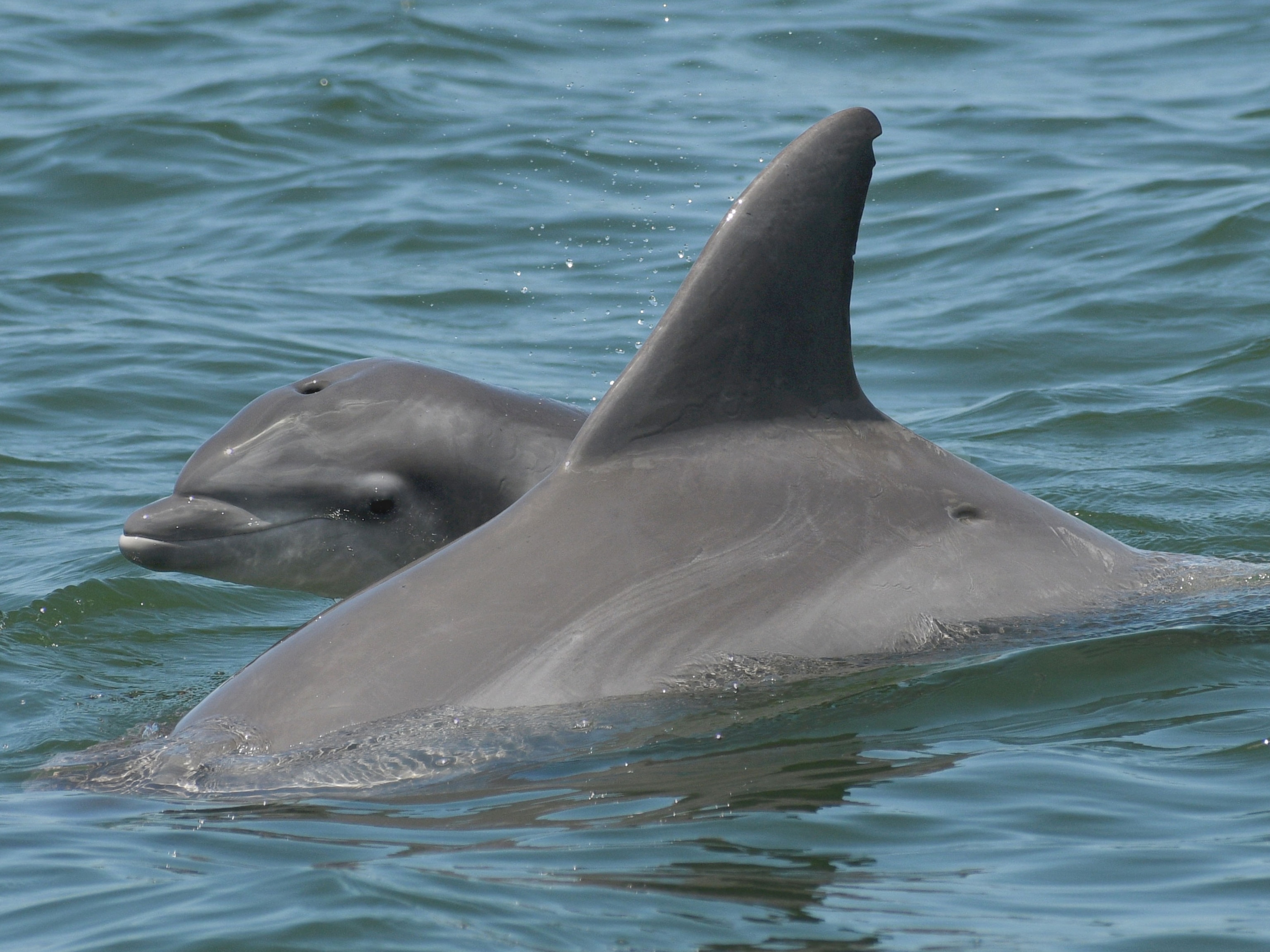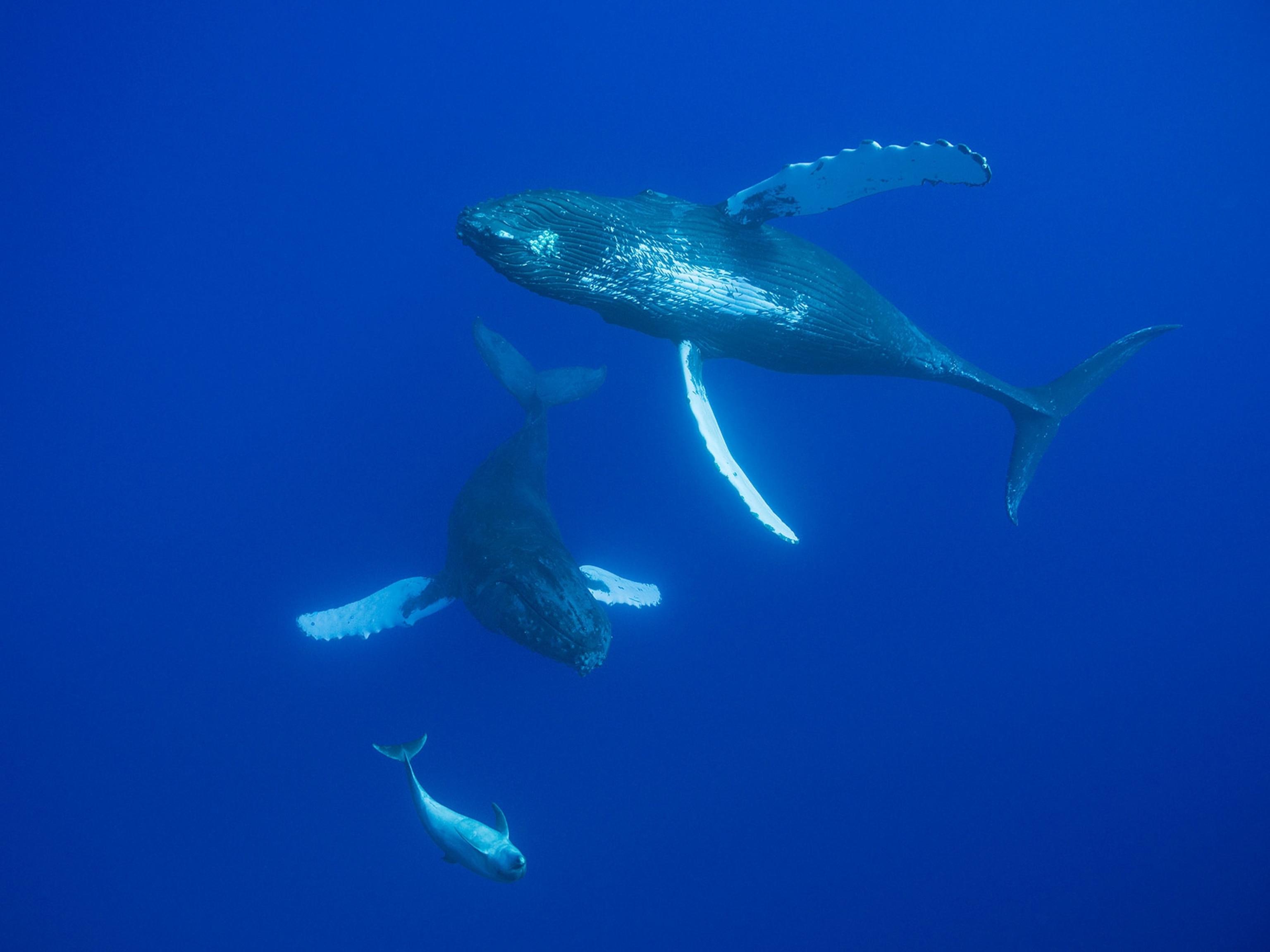
Dolphin Exhibits May Close at the National Aquarium
Eight bottlenose dolphins could move to a first-of-its-kind sanctuary.
Thrusting itself to the forefront of a debate about keeping dolphins and whales in captivity, the National Aquarium in Baltimore, Maryland, has announced that it is considering retiring its eight bottlenose dolphins and moving them to an oceanside sanctuary.
The proposed move comes at a time when the aquarium is shifting its overall mission from being mainly a tourist attraction to becoming a major conservation organization with national recognition.
Although the final decision about the dolphins has yet to be made, John Racanelli, the National Aquarium's director, said in a press statement, "we are studying and evaluating all possible options for providing them with the best possible living environment in the years ahead."
The aquarium has already hired Studio Gang Architects from Chicago to explore preliminary designs and has discussed the overall plan with several dolphin and whale biologists.
And the news—even if not final—is being widely celebrated. "I applaud them for considering ALL options, including the idea of retiring the animals to a sea pen," Naomi Rose, a cetacean biologist with the Animal Welfare Institute, wrote in an email to National Geographic.
Such a sanctuary, if built, would be the first of its kind.
Chronic Stress
"It's time for kudos," says Lori Marino, an Emory University neuroscientist and expert on dolphin cognition who has argued that keeping cetaceans in public aquariums is wrong. The aquarium is "clearly responding to the scientific evidence about dolphins' cognitive complexity and how they fare in captivity, and to public opinion."
Dolphins and other marine mammals kept in captivity suffer from chronic stress and behavioral abnormalities, such as odd repetitive movements, self-mutilation, and aggression, Marino explains.
Ironically, some of the research establishing dolphins' higher mental abilities has been done with the National Aquarium's animals. Diana Reiss, an animal cognition researcher at Hunter College in New York City, has worked with the younger dolphins to discover at what age they develop a sense of self-awareness.
Born in Captivity
Reiss and other cetacean experts will take part in an aquarium-sponsored "dolphin summit" later this month to determine if the move is feasible and what a seaside sanctuary would require.
"Seven of these animals were born in captivity," says Reiss, "and the eighth, Nani, was captured from the wild when she was very young." They've been fed dead fish and cared for in sterile, concrete pools their entire lives, and they know nothing about living in the wild.
"The husbandry must continue," Reiss says. "They cannot simply be released into the wild. But they can be given a choice about [which other dolphins] they want to live with, and they can be given a richer environment."
That general plan makes sense, says Richard Connor, a cetacean biologist at the University of Massachusetts at Dartmouth, who's studied dolphins in the wild for 30 years.
"I'd be very negative about this if the plan was simply to release them into the wild," he says. "That would be like taking country-raised children and letting them go in a big city. They need to care for them and exercise them for the rest of their lives."
Connor adds that he hopes that some type of cognition research will also be allowed, since little is known about how dolphins think in comparison to other species such as chimpanzees and elephants.
The aquarium opened its first dolphin exhibit in 1980, but the facility was poorly designed, and two of the dolphins soon died. Three others developed ulcers and were sent to an aquarium in Florida to recover.
The current dolphin exhibit, which is bright and airy, opened in 1990. But problems have persisted: Two baby dolphins born there in 2011 perished, one from internal bleeding and one from pneumonia.
Trendsetting
Racanelli's idea to give the dolphins a more natural life follows his previous decision in 2012 to end the aquarium's dolphin shows. Acknowledging that there was little of educational value in the dolphins' stunts, Racanelli instead arranged for visitors to see the animals in their pools and to meet staff biologists who could discuss dolphin cognition, behavior, and conservation.
In an interview with the New Yorker, Racanelli commented, "There are chimp sanctuaries, orangutan sanctuaries, gorilla sanctuaries, elephant sanctuaries, big-cat sanctuaries, bird sanctuaries ... And there's not yet a dolphin sanctuary. What's that about?"
By taking the lead and establishing the first dolphin sanctuary, the National Aquarium could set a trend.
Marino says that partly because of the movie Blackfish—about an orca at SeaWorld in Orlando, Florida, who killed one of his trainers—the public is less enthusiastic about seeing cetaceans in captivity.
"All it takes is for one of these institutions to be the leader, and others will follow," Marino predicts. "I have a feeling that this will start to roll."





